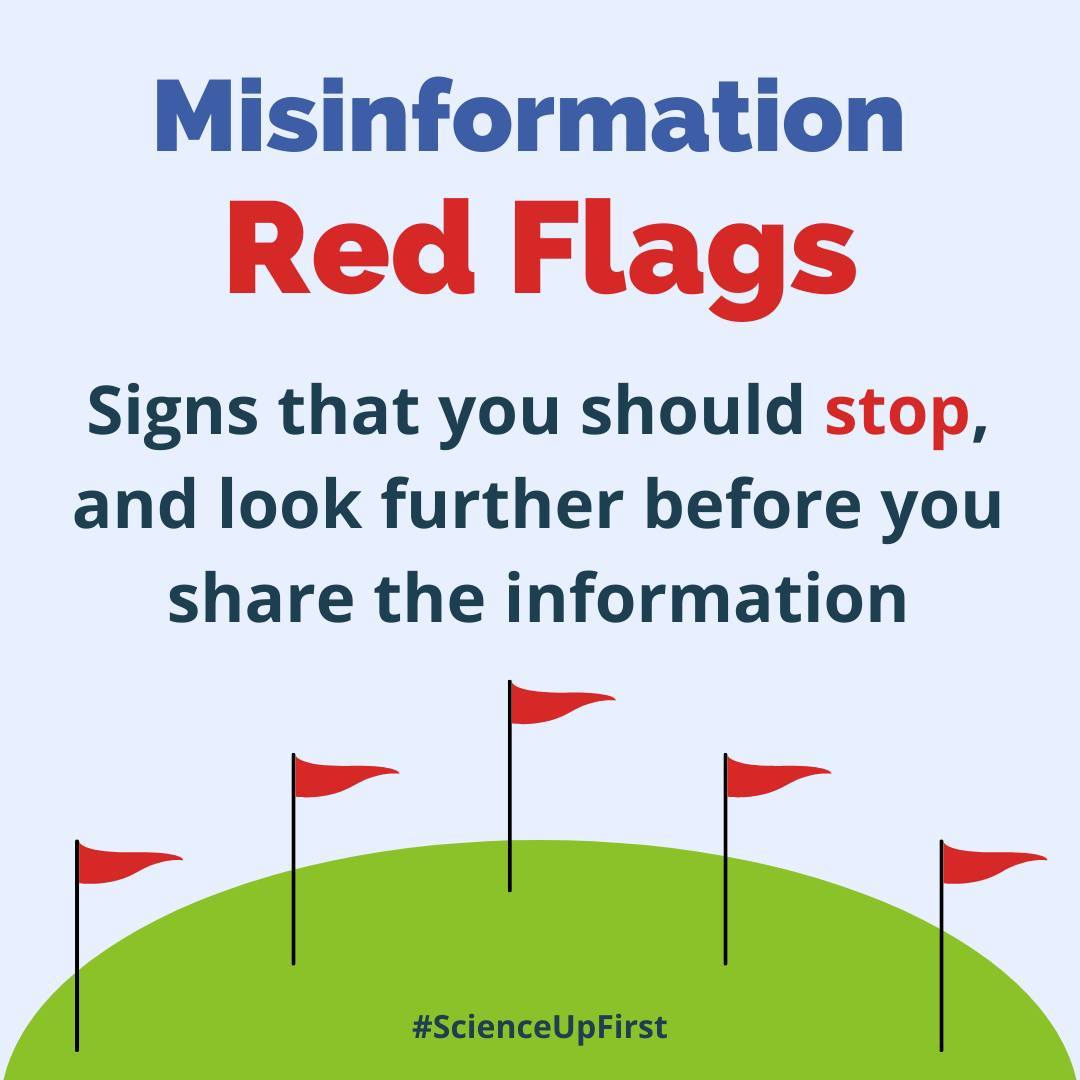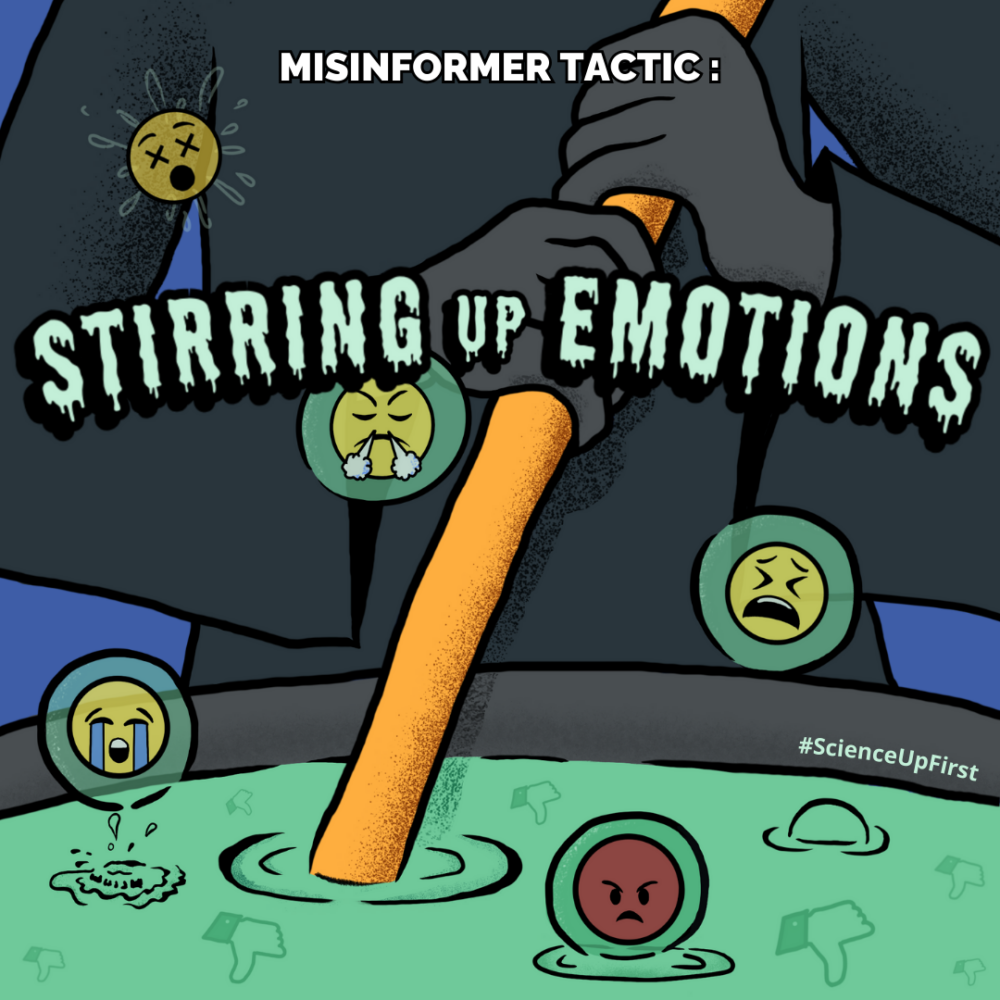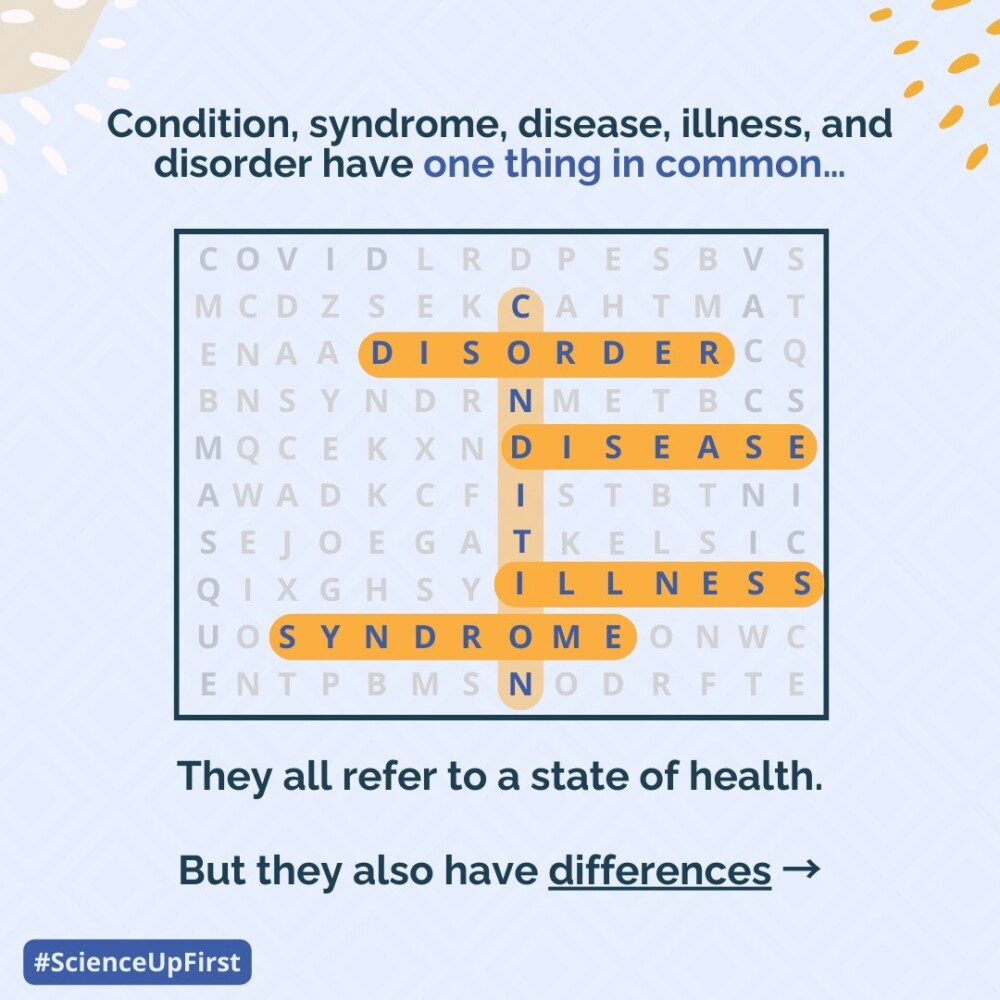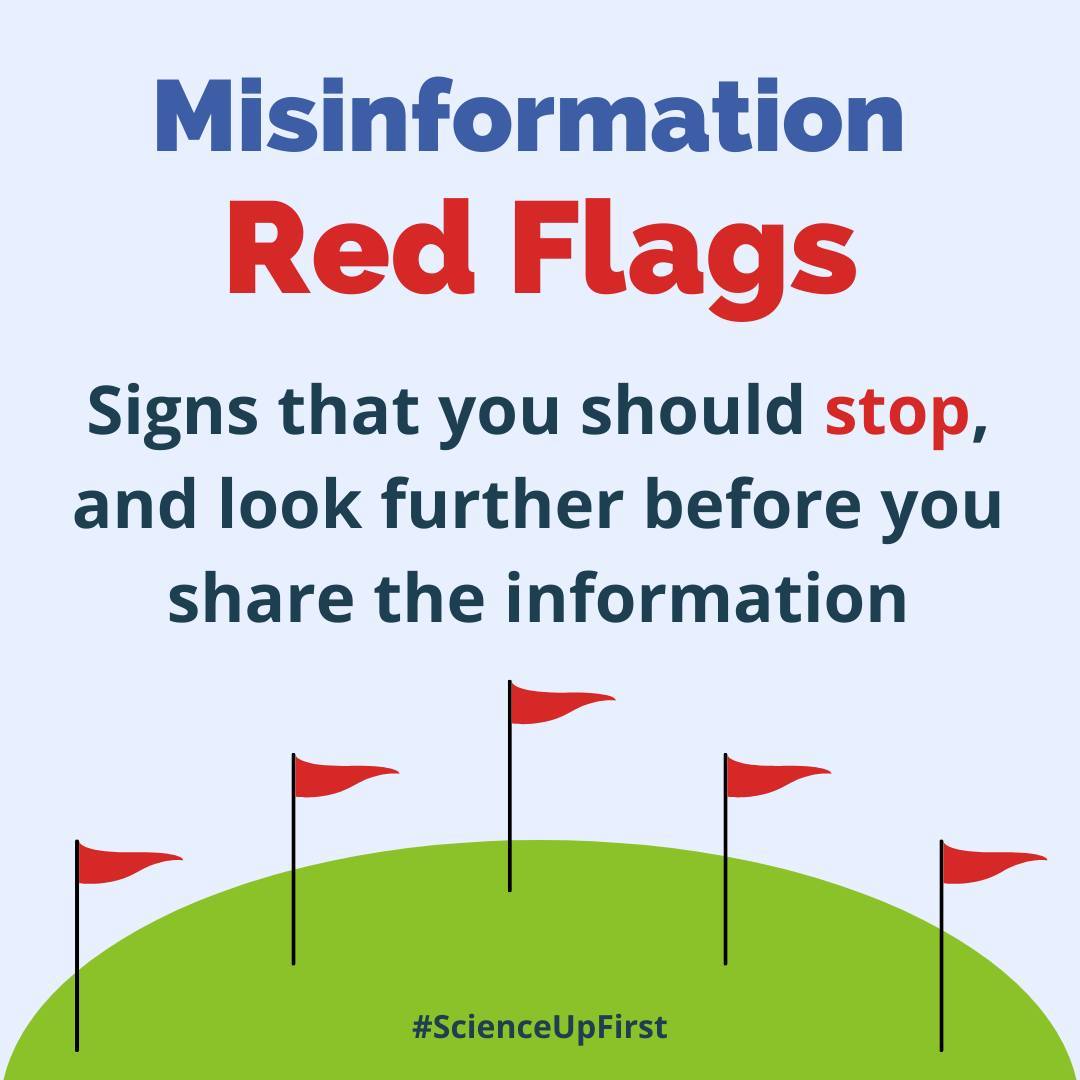
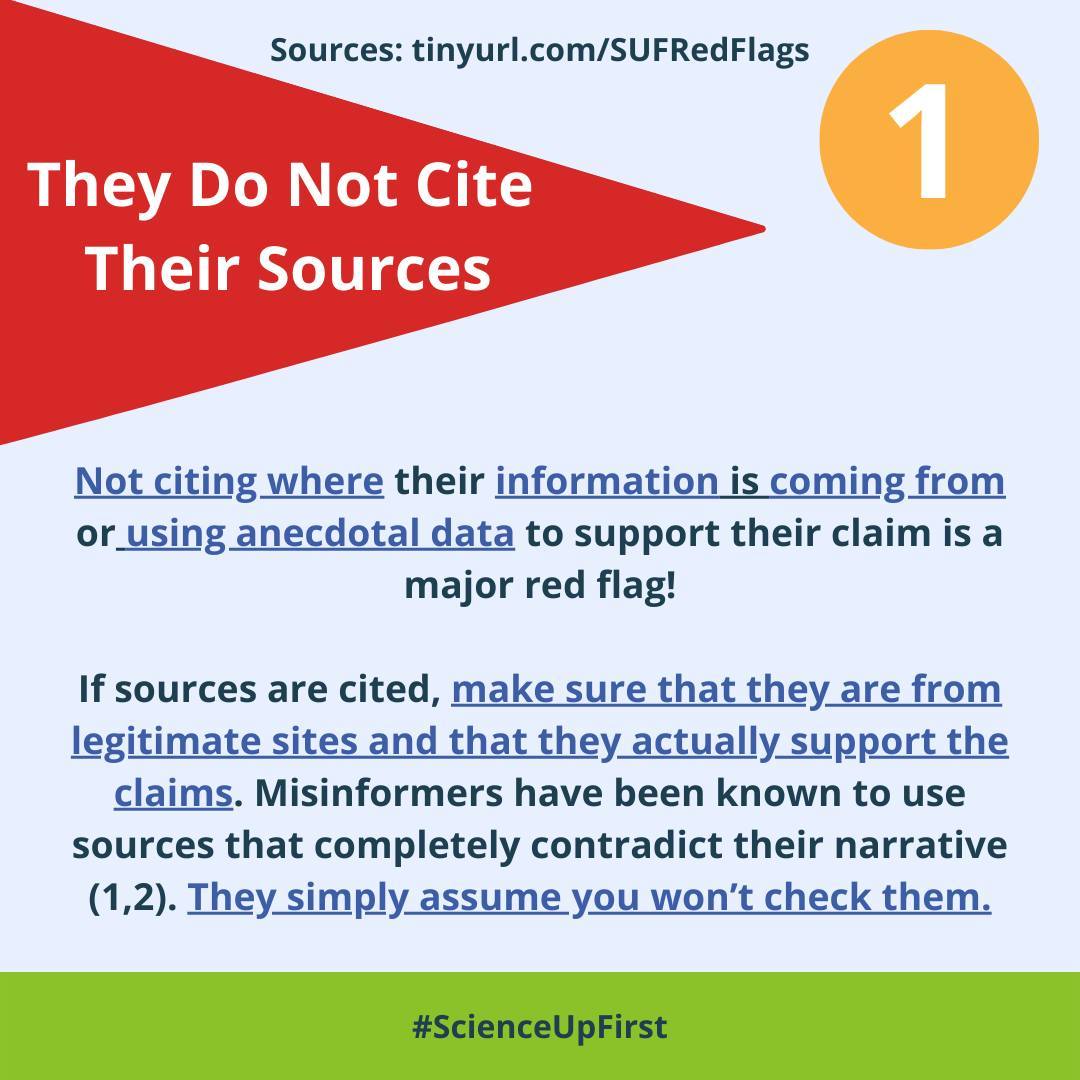
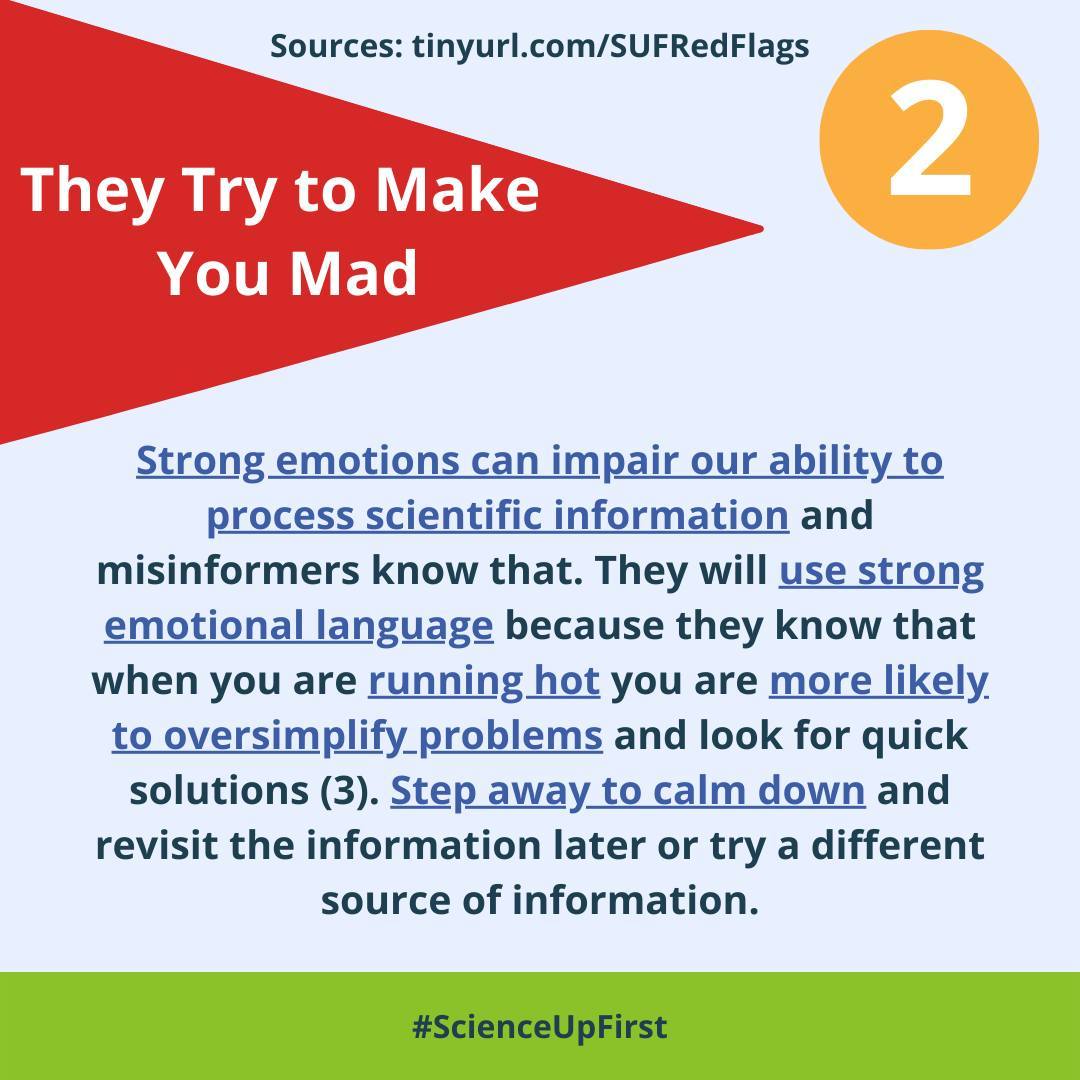
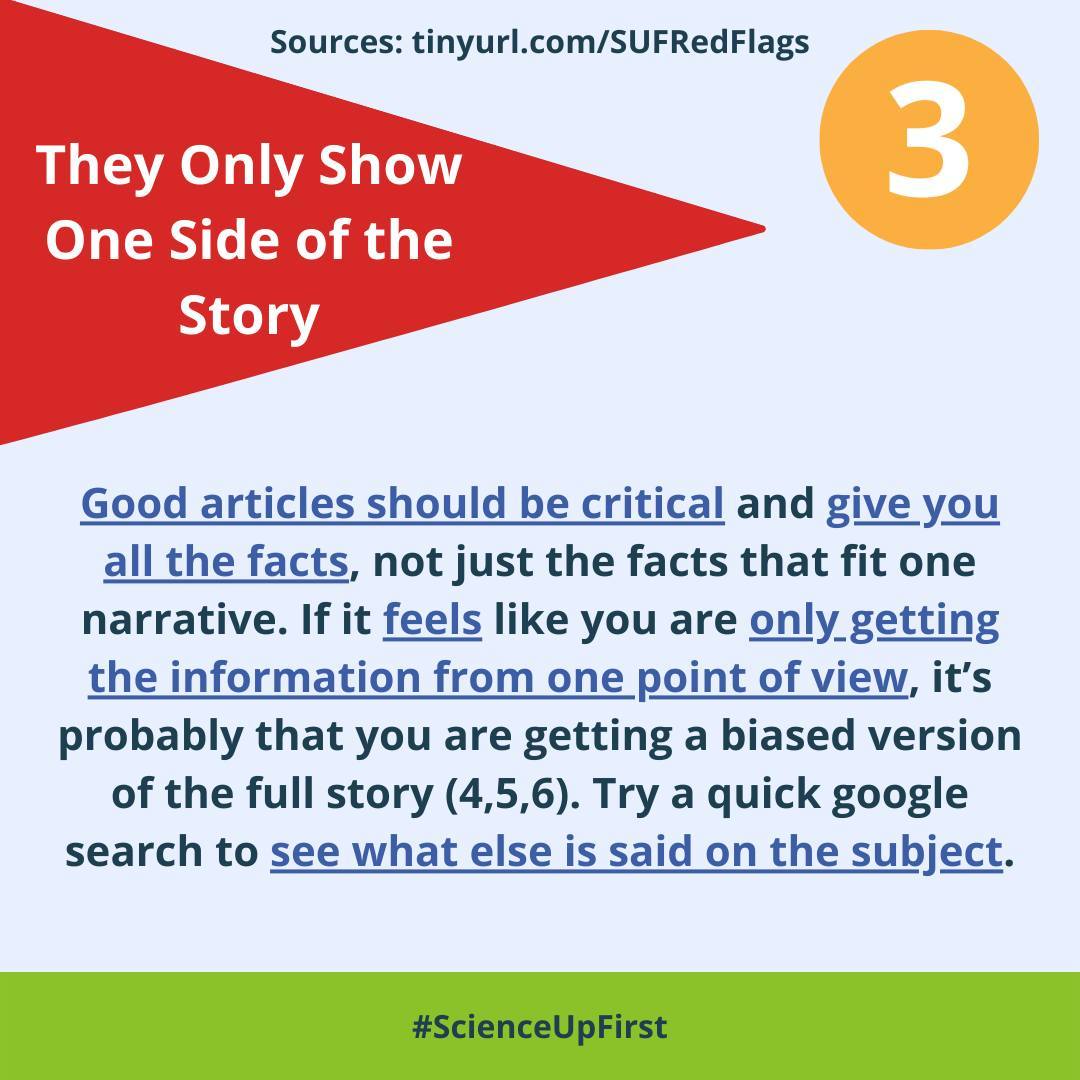
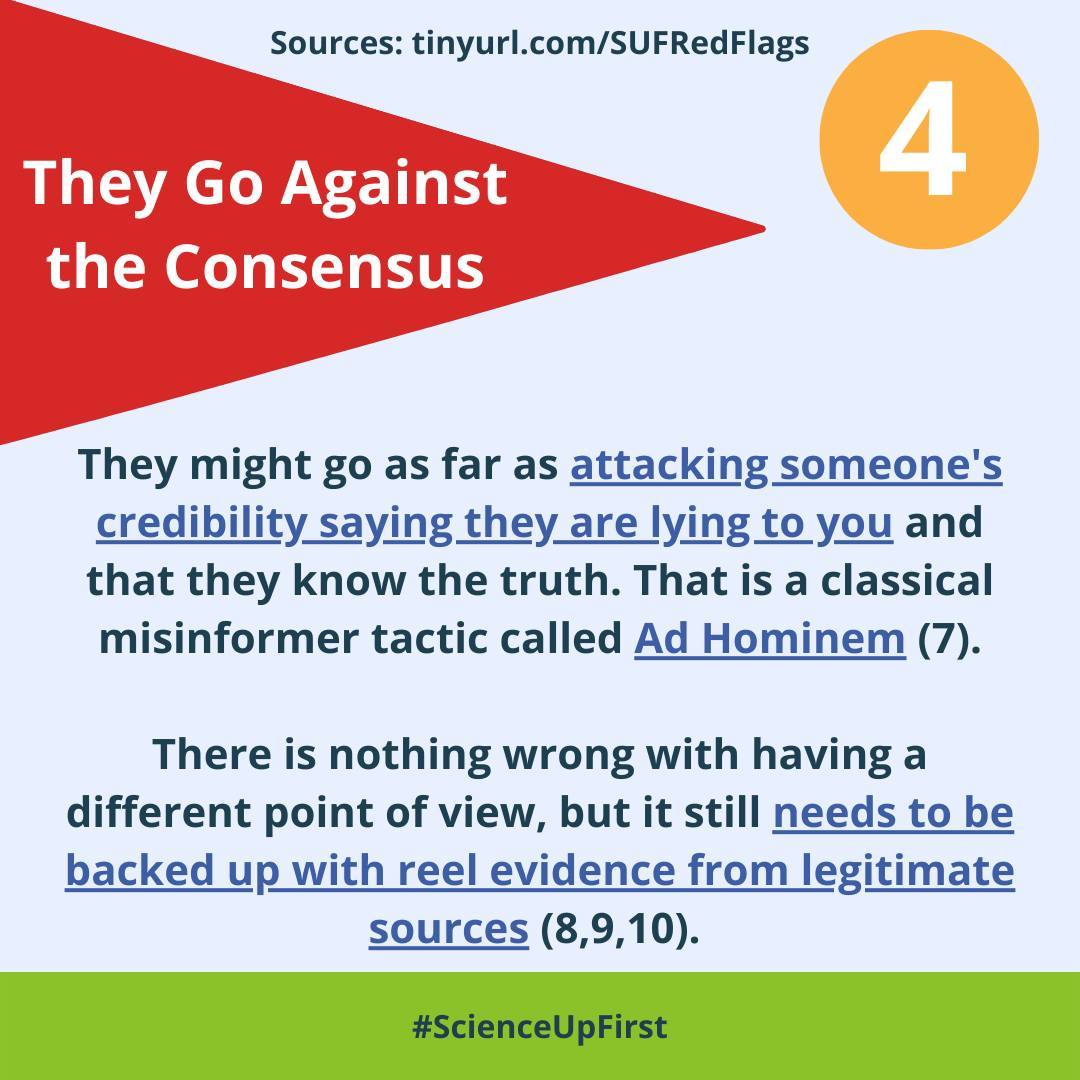
Spotting misinformation online can sometimes be tricky, but most of the time you can spot some red flags
One red flag is not always a bad thing, but it’s a sign that you should dive deeper before you share the information. The more red flags a content has, the more suspicious you should be.
You should investigate the content deeper if it:
- Does not cite its sources or the cited sources don’t support the claims that are made
- Uses strong emotional language
- Only shows one side of the story
- Is going against the general consensus without evidence
A few other things you should keep an eye for:
- Check the “about us” section on the website to know what is the goal of the organization and do they collaborate with experts or not (4).
- Always read beyond the headline to get the full picture. Misinformers will often use “clickbait” title (1).
- Check the date of the information that is cited. Misinformers will use old information, even though our understanding of the subject has deepened over time (11).
Don’t forget to assess your own bias. Sometimes, what we believe in can get in the way of our judgment (2). It’s more than ok to change our mind.
Share our original Tweet!
Spotting misinformation online can sometimes be tricky, but most of the time you can spot some red flags #ScienceUpFirst
[1/5] pic.twitter.com/ahJPBNBisl
— ScienceUpFirst | LaScienced’Abord (@ScienceUpFirst) October 28, 2022
View our original Instagram Post!
View this post on Instagram
- How to Spot Fake News
- How to Spot Fake News
- Misinformer Tactic: Make you angry
- How to Spot Fake News
- Don’t Believe Everything You Read
- Misinformer Tactic: False Dichotomy
- Misinformer Tactic: Ad Hominem Attack
- Evaluating Science: How to Fight Doubt-Mongering
- Can You Trust That Study? – One Study Rarely Flips the Script
- Misinformer Tactic: The Galileo Gambit
- Information in a Pandemic Flies Fast

